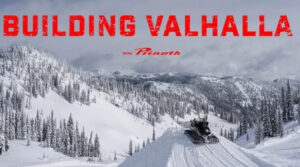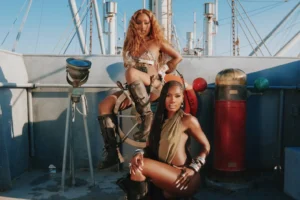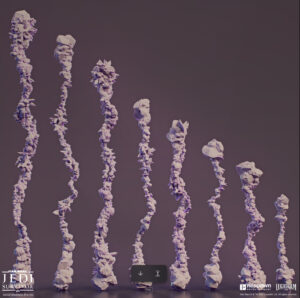Deep in the remote wilderness of British Columbia’s Valhalla mountain range, two legends of snowboarding—Charles Beckinsale and Torstein Horgmo—returned to do what they do best: push boundaries. With support from Baldface Valhalla and the cutting-edge grooming power of Prinoth, they created one of the most visually spectacular backcountry terrain setups ever built. This was more than a shoot—it was the construction of a fantasy park in the backcountry, designed to blend aesthetics, functionality, and the raw thrill of freestyle snowboarding.
From “Light” to Valhalla: A Creative Continuum
The roots of this collaboration date back to 2019, when Beckinsale and Horgmo worked on the experimental project Light—an atmospheric nighttime shoot featuring illuminated park features that highlighted the duo’s commitment to innovation. It was bold, stylized, and ambitious. But it was just a prototype.
For years, they envisioned a bigger stage. They wanted more terrain, more creative freedom, and the power to shape snow like sculpture. The concept: take the style of the street and park, and scale it for the alpine, without losing flow or form.
The Role of Prinoth: Precision in Every Pass
Key to making this vision a reality was their partnership with Prinoth, the premier snow grooming equipment brand. Using their Leitwolf snowcat, equipped with state-of-the-art grooming technology, Beckinsale and the crew were able to move massive volumes of snow with pinpoint control.
The features built weren’t your standard wedges or booters. These were fluid forms, many carved into the natural slope to resemble waves, ramps, or launchpads. Beckinsale, an architect of some of the most legendary snowparks on the planet, approached the project with surgical precision—calculating transitions, angles, and spacing for the ideal flow.
Prinoth’s machines allowed for a level of detail that hand tools or even older snowcats could never provide. The result: jumps that were not only functional but stunning to behold.
The Features: Park Engineering Meets Backcountry Soul
The backcountry park that emerged was a hybrid of natural terrain and freestyle vision. Each feature was built with the landscape in mind. The lines between built and natural disappeared. Riders could drop from a pillow line into a manicured takeoff, then land in a sloped pow landing designed to mirror nature’s curves.
Among the standout features:
- A step-over jump with a carved in-run that hugged a ridgeline, allowing riders to accelerate naturally into a floaty transition.
- A hip jump built into the side of a snow berm, with wind lips added for extra boost.
- A series of rollers and banks, shaped like oversized skatepark obstacles, designed for buttering, spins, and flow tricks.
This was not terrain built for one clip. It was terrain that encouraged creativity across multiple lines and styles.
Torstein’s Riding: Style Over Spectacle
If Charles Beckinsale was the engineer, Torstein Horgmo was the interpreter. Known for his cinematic eye and surgically clean riding, Horgmo was the perfect match for this park’s fluidity. He didn’t just go big—he went clean, connecting lines with grace and showing that freestyle snowboarding can be powerful without being reckless.
What made the footage shine wasn’t just the air time. It was the control in landings, the way Horgmo spun and floated with total awareness of the terrain. He’d slash the transition of one jump and tailpress the knuckle of another before launching into a backside 540 that looked like slow motion.
This wasn’t a highlight reel. It was a performance.
Flow on Snow
What made this project resonate wasn’t just the terrain or the tricks—it was the spirit of collaboration. Snowboarding has always had a tension between the rider and the builder. Too often, terrain parks are shaped without dialogue between the people who ride and the people who sculpt.
Here, the relationship was seamless. Horgmo would test a lip, offer feedback, and Beckinsale would adapt the angle within hours. Prinoth’s snowcat returned like a paintbrush to make the change. This loop of feedback and response created something rare: a park that evolved during the session.
The Setting: Valhalla as a Canvas
The Valhalla range isn’t just a stunning location—it’s a sacred one among powder riders. Remote, wild, and unpredictable, it offers some of the deepest snow and most rugged features in North America.
But it’s also fragile. And the team respected that.
Every feature was built with the understanding that the snow would melt, that the land beneath needed to remain untouched. No digging into the earth. No disrupting trees or rocks. When the season ends, there will be no trace left behind—a powerful reminder that progression and environmental care can go hand in hand.
The Cinematics: More Than a Video Part
The end product of this project isn’t just terrain. It’s a film, now streaming online and shared widely across snowboard communities. Shot by a small crew using drones, follow cams, and long-lens angles, the visuals reflect the project’s unique blend of style and scale.
It doesn’t feel like your average snowboard edit. There’s less focus on trick callouts and more on mood—the crisp morning light, the whisper of the snowcat, the arc of a tailgrab over a sunlit jump.
It’s a tribute not just to what snowboarding looks like, but to what it feels like when everything aligns.
Legacy: Setting the Bar for Backcountry Design
This build will have ripple effects. Already, builders from resorts across North America are referencing the footage, taking notes on shapes, spacing, and design theory. And riders—especially film crews—are eyeing the blend of functional performance and aesthetic intention as the future of big mountain freestyle.
What Beckinsale and Horgmo created is more than a series of jumps. It’s a model: for how to work together, how to ride with style, and how to shape the mountain without scarring it.
A Session for the History Books
In the end, what happened in Valhalla was a reminder of snowboarding at its best: a team of artists and athletes, machines and minds, working together to make something original, beautiful, and rideable.
Beckinsale’s eye for form. Horgmo’s effortless finesse. Prinoth’s technological muscle. It all came together in a remote alpine basin for a session that didn’t just get filmed—it redefined what backcountry terrain can be.
And when the snow melts, and the jumps disappear, what remains is the feeling. The moment. The reminder that snowboarding still has new frontiers—and they’re worth building.
No comments yet.








